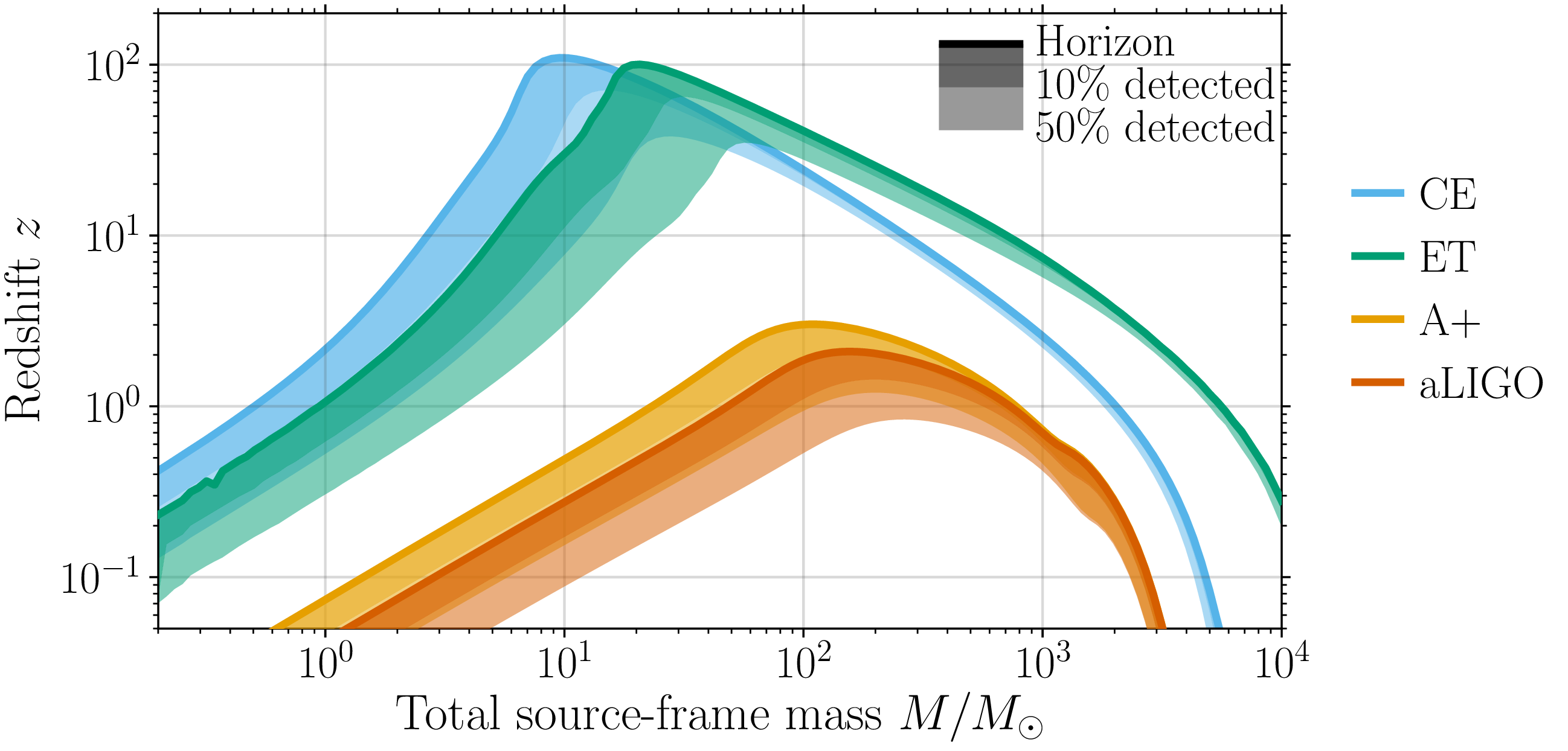
The main focus of our research is to understand the universe with the new messenger of gravitational waves. Gravitational waves are ripples in the very fabric of spacetime that are produced with incredible intensity when compact objects like black holes and neutron stars collide with each other. The waves travel outwards at the speed of light and the ripples they create can be heard billions of light years away. Indeed, the Laser interferometric detectors in the US (LIGO), Europe (Virgo) and Japan (KAGRA) monitor the sky looking for such collisions from far corners of the Universe. The adjacent wheel summarizes what such waves can reveal about the cosmos and these are the primary areas of our research at the PAX group at Penn State.
 With the discovery of merging binary black holes and neutron stars, LIGO and Virgo detectors have opened up a new window on the dark and dense Universe. This new window has already provided us with a wealth of data that has transformed our understanding of the Universe. In addition to revealing new classes of sources (binaries consisting of a pair of black holes and one neutron star and one black hole) that have raised questions about how they form and evolve, these observations have solved decades old problems in fundamental physics and astronomy.
With the discovery of merging binary black holes and neutron stars, LIGO and Virgo detectors have opened up a new window on the dark and dense Universe. This new window has already provided us with a wealth of data that has transformed our understanding of the Universe. In addition to revealing new classes of sources (binaries consisting of a pair of black holes and one neutron star and one black hole) that have raised questions about how they form and evolve, these observations have solved decades old problems in fundamental physics and astronomy.

We now know that gravitational waves travel essentially at the speed of light, once again proving Einstein right, the Universe’s heavy elements are produced in the aftermath of the merger of neutron stars that are also intense flashes of gamma-ray bursts, neutron-star are likely composed of soft hadronic matter with stringent constraints on their size and maximum mass, and black holes grow via hierarchical mergers producing heavier and heavier black holes. The adjacent image is the artist’s conception of how the remnant of a binary neutron star merger launches a gamma-ray jet that lasts for only a few seconds but can be seen as intense flashes of light across the Universe.
Future observatories such as the Cosmic Explorer and Einstein Telescope will facilitate will make hundreds of thousands of binary mergers each year that will include hundreds of high fidelity detections. With a deep and all-sky survey that will detect sources from dark ages (see the diagram below for cosmic reach of the next generation of detectors for various types of mergers) we expect gravitational wave astronomy to impact fields afar from particle to nuclear physics and from general relativity to string theory and beyond.

These include unprecedented understanding of the properties of dense matter in neutron star cores including their equation of state and the phase diagram of quark matter, precision measurement of the Hubble constant and the nature of dark energy, searches for dark matter in and around compact objects, observation of early universe stochastic backgrounds that could shed light on the electroweak phase transitions, production of cosmic strings. If you are interested in any of these you will likely find Penn State is the place for your graduate studies, postdoctoral fellowships or just short- or long-visiting fellowships. Please contact members of the group if you want to find more about our research.

